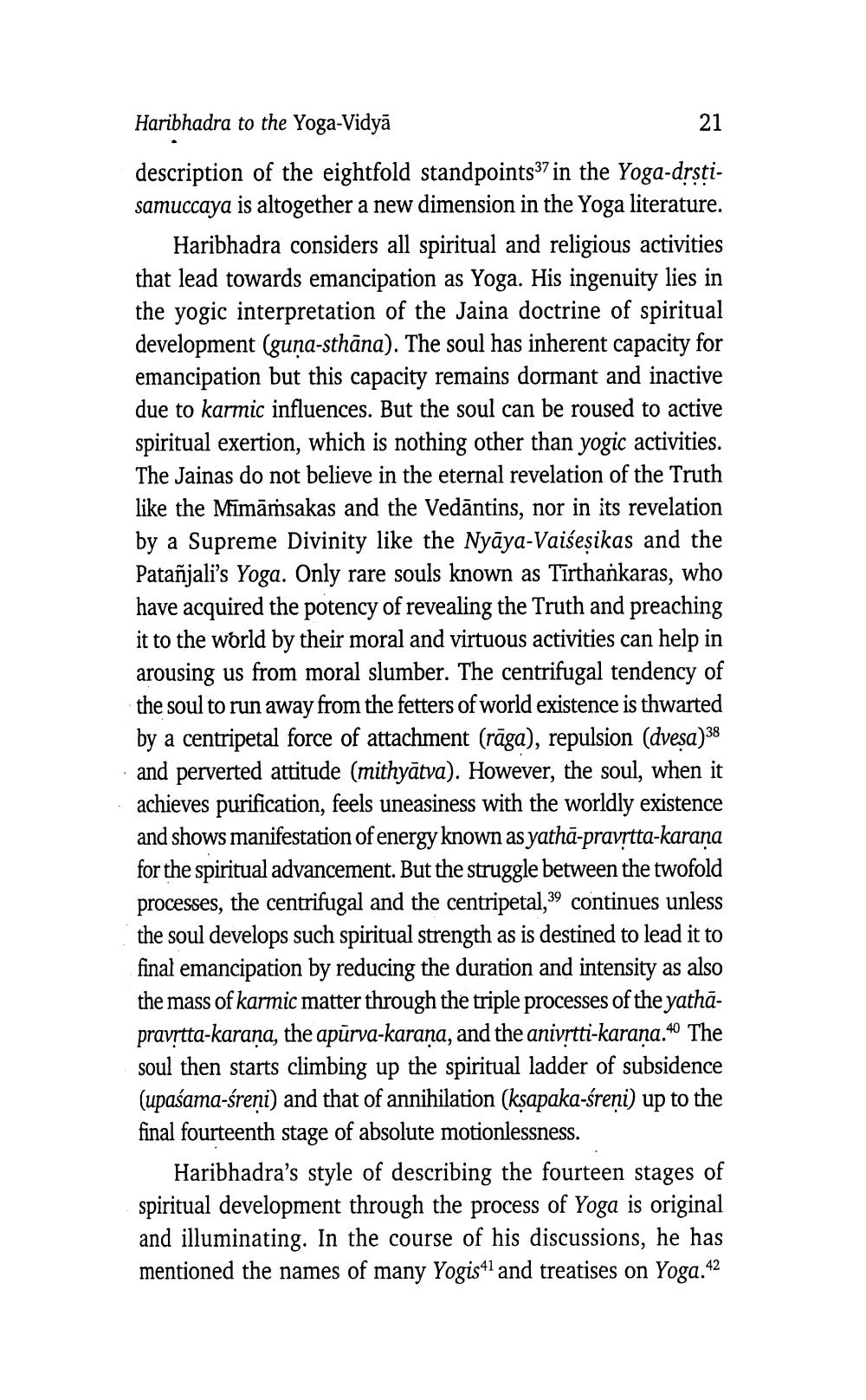________________
Haribhadra to the Yoga-Vidyā description of the eightfold standpoints37 in the Yoga-drstisamuccaya is altogether a new dimension in the Yoga literature.
Haribhadra considers all spiritual and religious activities that lead towards emancipation as Yoga. His ingenuity lies in the yogic interpretation of the Jaina doctrine of spiritual development (guna-sthāna). The soul has inherent capacity for emancipation but this capacity remains dormant and inactive due to karmic influences. But the soul can be roused to active spiritual exertion, which is nothing other than yogic activities. The Jainas do not believe in the eternal revelation of the Truth like the Mimāṁsakas and the Vedāntins, nor in its revelation by a Supreme Divinity like the Nyāya-Vaiseșikas and the Patañjali's Yoga. Only rare souls known as Tirthankaras, who have acquired the potency of revealing the Truth and preaching it to the world by their moral and virtuous activities can help in arousing us from moral slumber. The centrifugal tendency of the soul to run away from the fetters of world existence is thwarted by a centripetal force of attachment (rāga), repulsion (dvesa)38 and perverted attitude (mithyātva). However, the soul, when it achieves purification, feels uneasiness with the worldly existence and shows manifestation of energy known as yathā-pravrtta-karana for the spiritual advancement. But the struggle between the twofold processes, the centrifugal and the centripetal,39 continues unless the soul develops such spiritual strength as is destined to lead it to final emancipation by reducing the duration and intensity as also the mass of karmic matter through the triple processes of the yathāpravrtta-karaṇa, the apūrva-karana, and the anivrtti-karaņa.40 The soul then starts climbing up the spiritual ladder of subsidence (upaśama-śreni) and that of annihilation (ksapaka-śreņi) up to the final fourteenth stage of absolute motionlessness.
Haribhadra's style of describing the fourteen stages of spiritual development through the process of Yoga is original and illuminating. In the course of his discussions, he has mentioned the names of many Yogis41 and treatises on Yoga.42




